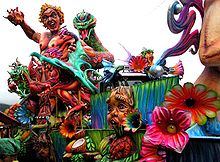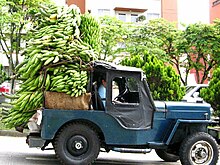


The carnivalinColombia was introduced by the Spaniards. The Colombian carnival has incorporated elements from European culture, and has managed to syncretise, or re-interpret, traditions that belonged to the African and Amerindian cultures of Colombia. There is documentary evidence that the carnival existed in Colombia in the 17th century[1] and had already caused concern to the colonial authorities, who censored the celebrations, especially in the main centers of power such as Cartagena, Bogotá and Popayán. The carnival, therefore, continued its evolution and re-interpretation in the small and at that time unimportant towns where celebrations did not offend the ruling elites. The result was the uninterrupted celebration of carnival festivals in Barranquilla (Barranquilla's Carnival), and other villages along the lower Magdalena River in northern Colombia, and in Pasto, Nariño (Blacks and Whites' Carnival) in the south of the country. In modern times, there have been attempts to introduce the carnival in the capital, Bogotá, in the early 20th century, but it has always failed to gain the approval of authorities. The Bogotá Carnival has had to wait until the 21st century to be resurrected, this time, by the authorities of the city. Colombia is recognized by its large variety of festivals, carnivals and fairs. Most towns have their own, ranging from those celebrating coffee (and almost every single agricultural produce) to the ones held in honor of the town's Saint feast. The common characteristics of the festivals are the nomination of a beauty Queen and the setting up of public dance floor.

A very important and traditional carnival is the Blacks and Whites' Carnival in the city of Pasto, Nariño. It is one of the most ancient carnivals in the Americas. It commemorates the day in which the African slaves had a free day when they unleashed all their happiness.
Some historians refer that in 1607, there was a slave rebellion in the town of Remedios, Antioquia that made the authorities panic. The event was remembered by the black population of Popayán, Cauca, who demanded a day off, in which they were really free. The King of Spain conceded January 5. It is said that when the news reached home the African population flocked to the streets and danced at the rhythm of African music and started to blacken with coal all the white walls of the city.
The enthusiastic celebration was brought to Pasto by the Ayerbe family around 1854. By 1887, the celebration had reached to certain social spheres and acquired a high level of refinement, and people started using costumes and masks. The Castaneda family recreated by the January 4 crewes could be a characterization of the Ayerbe Family.
Bogotá was one of the first cities in the continent in celebrating its own carnival and that in 1539,[1] just one year after the Hispanic foundation of the city the Spanish Crown decreed the celebrations will be carried out in Lent with the name of Carnestolendas of Santafé de Bogotá. In 1561 the Indian chief of Ubaque was allowed to participate celebrating the parties of his own culture (Muisca) which were part of the celebrations until the 19th century.
The carnival returned to the capital of Colombia in modern times. The celebration of the first Carnival in Bogotá dates back to 1916 and it started as a Student Carnival for which a congeniality queen was elected. The first queen of Bogotá's student carnival was Elvira Zea. After winning the contest she used her own real name as Queen's name, in that occasion she took the name Elvira I. The queen was the person in charge of opening the celebrations. In the following years the carnival grew in number of comparsas (krewes) and beauty queens. During the 1930s the national government and the council of Bogotá suspended the carnival due to disorders caused by alcohol consumption. An attempt to revive the carnival in 1960 failed again for reasons of alcohol abuse and violence.
The Carnival was resurrected by the Mayor of Bogotá in a Government Resolution on April 14, 2005. The objective of the new Carnival was to promote a collective atmosphere of fellowship and to celebrate life, creative expression, and enjoyment. It further aimed to generate a feeling of belonging to the city, to enforce processes of reconciliation and fair play, and the inclusion and recognition of all districts and cultures of the Capital City of Colombia.

|
| |||||||||||
|---|---|---|---|---|---|---|---|---|---|---|---|
| Mixed arts |
| ||||||||||
| Film/theater/literature |
| ||||||||||
| Traditional/regional |
| ||||||||||
| Carnival in Colombia |
| ||||||||||
| Music festivals |
| ||||||||||
| Related events |
| ||||||||||
| |||||||||||
|
Carnival around the world
| ||
|---|---|---|
| Asia |
| |
| Europe |
| |
| North America |
| |
| Caribbean |
| |
| South America |
| |
| Oceania |
| |
| Related |
| |
| ||